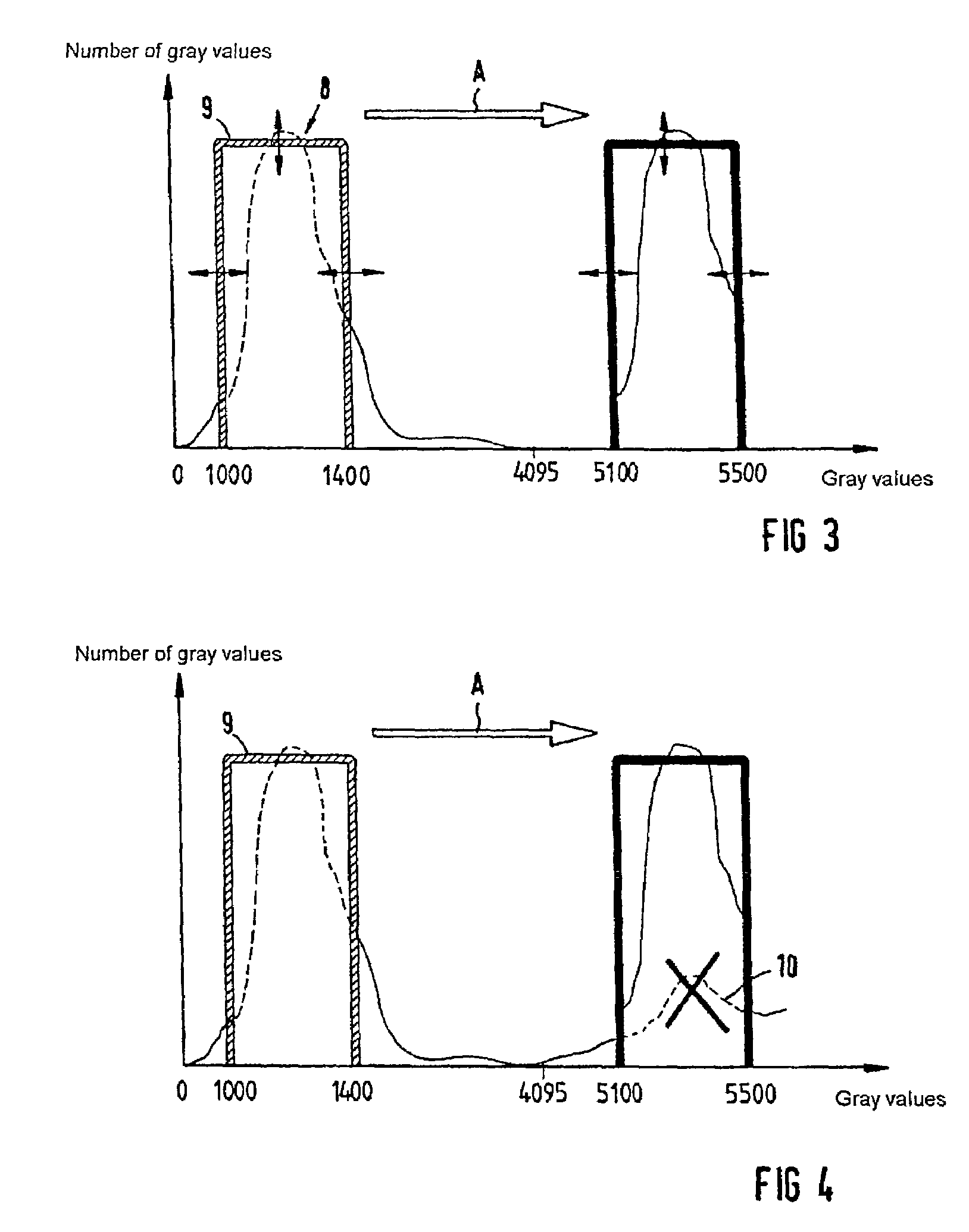Device for processing images, in particular medical images
a technology for processing devices and images, applied in the field of processing devices for images, can solve problems such as difficulties, loss of information about which of the two image series the individual pixels to be represented belong by mixing, and contrast loss due to alpha blending
- Summary
- Abstract
- Description
- Claims
- Application Information
AI Technical Summary
Benefits of technology
Problems solved by technology
Method used
Image
Examples
Embodiment Construction
[0032]FIG. 1 shows, in the form of an outline diagram, a device 1 according to the invention for processing images. This device comprises an image-processing computation unit 2 and the monitor 3, on which images and other information can be displayed. In the exemplary embodiment which is shown, the image-processing computation unit 2 contains images which have been recorded using two different recording devices, for example a computer topography instrument 4 and a magnetic resonance instrument 5, and which are to be overlaid. On the monitor 3, it is now possible to represent gray-value histograms 6 for the individual images or image series. The user can modify these gray-value histograms by highlighting markings, so that a meaningful fusion of various images or image series is possible. This will discussed in more detail below. The fusion of the images is carried out by the image-processing computation unit, the fusion result being subsequently output in turn on the monitor 3. Of co...
PUM
 Login to View More
Login to View More Abstract
Description
Claims
Application Information
 Login to View More
Login to View More - R&D
- Intellectual Property
- Life Sciences
- Materials
- Tech Scout
- Unparalleled Data Quality
- Higher Quality Content
- 60% Fewer Hallucinations
Browse by: Latest US Patents, China's latest patents, Technical Efficacy Thesaurus, Application Domain, Technology Topic, Popular Technical Reports.
© 2025 PatSnap. All rights reserved.Legal|Privacy policy|Modern Slavery Act Transparency Statement|Sitemap|About US| Contact US: help@patsnap.com



